Kyrgyzstan is the quintessentially remote Central Asian land and arguably the worlds least known country. It is situated in the southeastern part of Central Asia bordered by Kazakhstan to the north, China to the east, China and Tadjikistan to the south, and Uzbekistan to the west. It is about 900 km long from east to west and 425 km from south to north. The area of the country (198.5 thousand sq. km) is comparable with such countries as Switzerland and Netherlands.
The main treasure of Kyrgyzstan is its mountains, peaks and ranges of the Tien Shan Mountain system. Immense, regal and forbidding, the peaks of the Tien Shan, or Celestial Mountains, soar to heights of more than 20,000 feet. The highest, of course, are accessible for only brave and ambitious mountaineers. Lower mountains are beginning to attract serious trekkers from all over the world. During the trek they are able to see deserts, steppes, forests, alpine meadows and arctic eternal glaciers ascending upper and upper the mountains for only one day! Mountains cover 90 % of the country and have a mystic hold on the national consciousness. Along with its 3,000 lakes, hundreds of rivers and scores of glaciers, they make this a wonderful place for an outdoor vacation. This region offers the wonders of nature to visitors of all sorts. There are fields full of rare flowers that swarm with brilliantly colored birds and butterflies.
 The fabled Lake Issyk Kul is fundamental to Kyrgyz identity. This vast body of water is one of the largest mountain lakes in the world. There are many legends about it, and tribes inhabiting the shores of the lake used to pray to its patron spirits. Nineteenth-century explorers marveled at it, one calling it’s a blue emerald set in a frame of silvery mountains.
The fabled Lake Issyk Kul is fundamental to Kyrgyz identity. This vast body of water is one of the largest mountain lakes in the world. There are many legends about it, and tribes inhabiting the shores of the lake used to pray to its patron spirits. Nineteenth-century explorers marveled at it, one calling it’s a blue emerald set in a frame of silvery mountains.
The country does not compare to neighboring Uzbekistan in the grandeur of its historical site; there is nothing to rival such ancient cities as Samarkand, Bukhara and Khiva. But at the same time the ruins of Novaket, Suyab, Balasaghun cities and many other evidences of the ancient civilizations are the significant sites to explore for history lovers.
The Kyrgyz have been nomads since times immemorial. They still follow flocks of sheep, yaks and horses to pasture lands as the seasons change and live in portable round tents called yurts. Their nomadic tradition makes them unusually hospitable. They still welcome guests as warmly as they did in the days when visitors were the only source of news from the outside world.
 Kyrgyzstan is rich in spiritualism and myth. Shamanism is still widely practiced. In rural areas people worship the mountains, the rivers and the sun. Some Kyrgyz customs are rather unusual for foreigners. For instance, sheep are not only a source of sustenance in Kyrgyzstan but also sacred creatures that were for centuries at the center of tribal life. Each part of the sheep has an association with some power. At many feasts, it is still normal to that the guest of honor is offered the right eye of a grilled sheep, and that he or she eats it while the other diners applaud. The second most honored guest receives the left eye, and the next two are given the ears.
Kyrgyzstan is rich in spiritualism and myth. Shamanism is still widely practiced. In rural areas people worship the mountains, the rivers and the sun. Some Kyrgyz customs are rather unusual for foreigners. For instance, sheep are not only a source of sustenance in Kyrgyzstan but also sacred creatures that were for centuries at the center of tribal life. Each part of the sheep has an association with some power. At many feasts, it is still normal to that the guest of honor is offered the right eye of a grilled sheep, and that he or she eats it while the other diners applaud. The second most honored guest receives the left eye, and the next two are given the ears.
The story of Stephen Kinzer, one of numerous foreign visitors to our country, may be interesting for travelers who have never been to Kyrgyzstan. Stephen is a journalist. Last year he visited our country as a tourist and described his travel. The story of his adventures is the following:
Like most visitors to Kyrgyzstan, I began my trip in the capital, Bishkek. Bishkek is not unpleasant, and has a few attractions to hold a traveler. One is the sprawling Osh bazaar. This is a country of astonishing ethnic variety, and both its generosity and its many faces are on display at the bazaar.
Before leaving Bishkek, I visited a rugged glacial park called Ala-Archa. Less than an hour outside the city limits, it is an impressive introduction to Kyrgyzstan’s natural riches. I hiked past waterfalls cascading over wooden cliffs, peered down gorges at rushing streams, and climbed a rocky path to a yurt where President Ascar Akaev sometimes entertains guests. Nowhere have I found such rugged beauty so close to a national capital.
From Bishkek I traveled to east of the country. There are other interesting parts of Kyrgyzstan, of course. The western town of Talas and the mountain outpost of Naryn both have their charms. So does the southern city of Osh, with its dazzling mix of ethnic groups that reflect Central Asia’s racial diversity.
After a couple of hours, we came to the fabled Lake Issyk Kul. The area around the lake offers a fine view of Kyrgyz life. Nomads move up and down the surrounding peaks in warmer months, and the views are wonderful. Fat trout can be pulled from the water without much trouble. I met a Swiss College student walking along the shore who told me he had spent two months exploring the area, trekking in the hills and sleeping in the yurts of local inhabitants.
But the most striking scenery, the vistas for which Kyrgyzstan will one day be famous, are to be found east of Karakol.
I spent one day driving through the Tien Shan, which were covered with snow even in early autumn, gazing in awe at soaring blue glaciers. On another day, I rode a horse borrowed from a local hunter through verdant foothills, trotting across pristine streams and stopping for tea and kumyz (fermented mare’s milk) at a yurt where the floor was covered with colorful felt carpets.
I had no time for camping or white-water rafting, but envied people I met who did. Most told me that they had not imagined that a place like this could still exists, so wild and unknown yet accessible to even the moderately adventurous traveler.
The morning before I left Karakol, I came to breakfast at the rustic Yak Lodge and found a bowl of meat waiting on the table for me. It was tender and tasty. This was my first experience-eating ibex, a large mountain goat that lives in the Tien Shan. It was one of a lot of exotic dishes I had in Kyrgyzstan. Another dish I was eager to taste was the traditional sheep’s eye offered to the guest of honor. But like the elusive snow leopard that is a symbol of the Kyrgyz people, the sheep’s eye eluded me on this trip. It is only one of tantalizing attractions that I hope will bring me back someday to this “land at the foot of the sun”
Welcome to Kyrgyzstan!
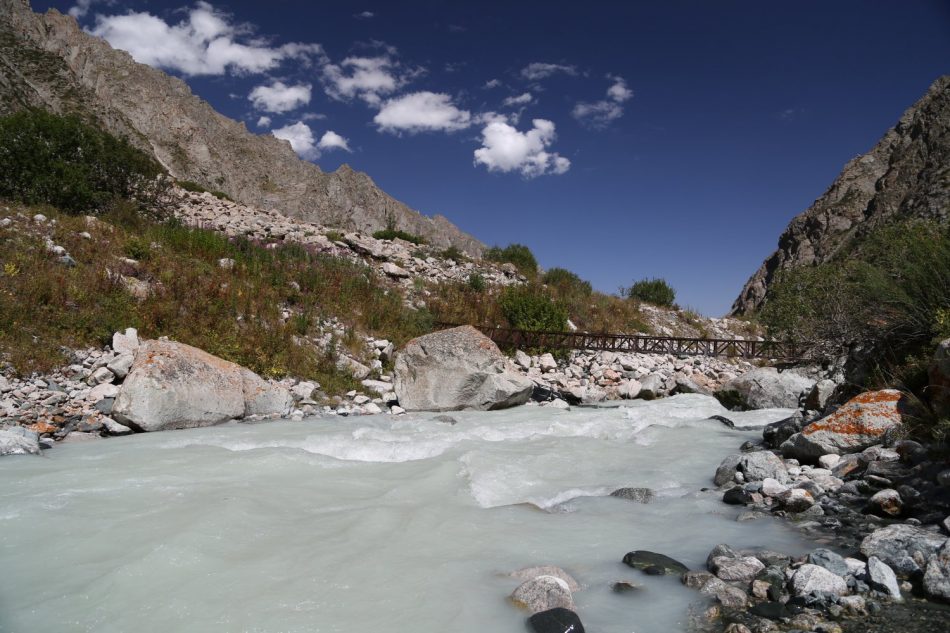
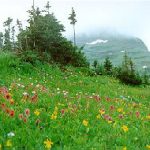
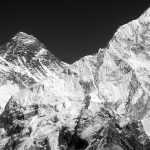
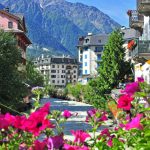
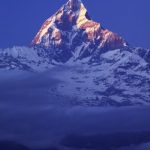

Leave a Reply